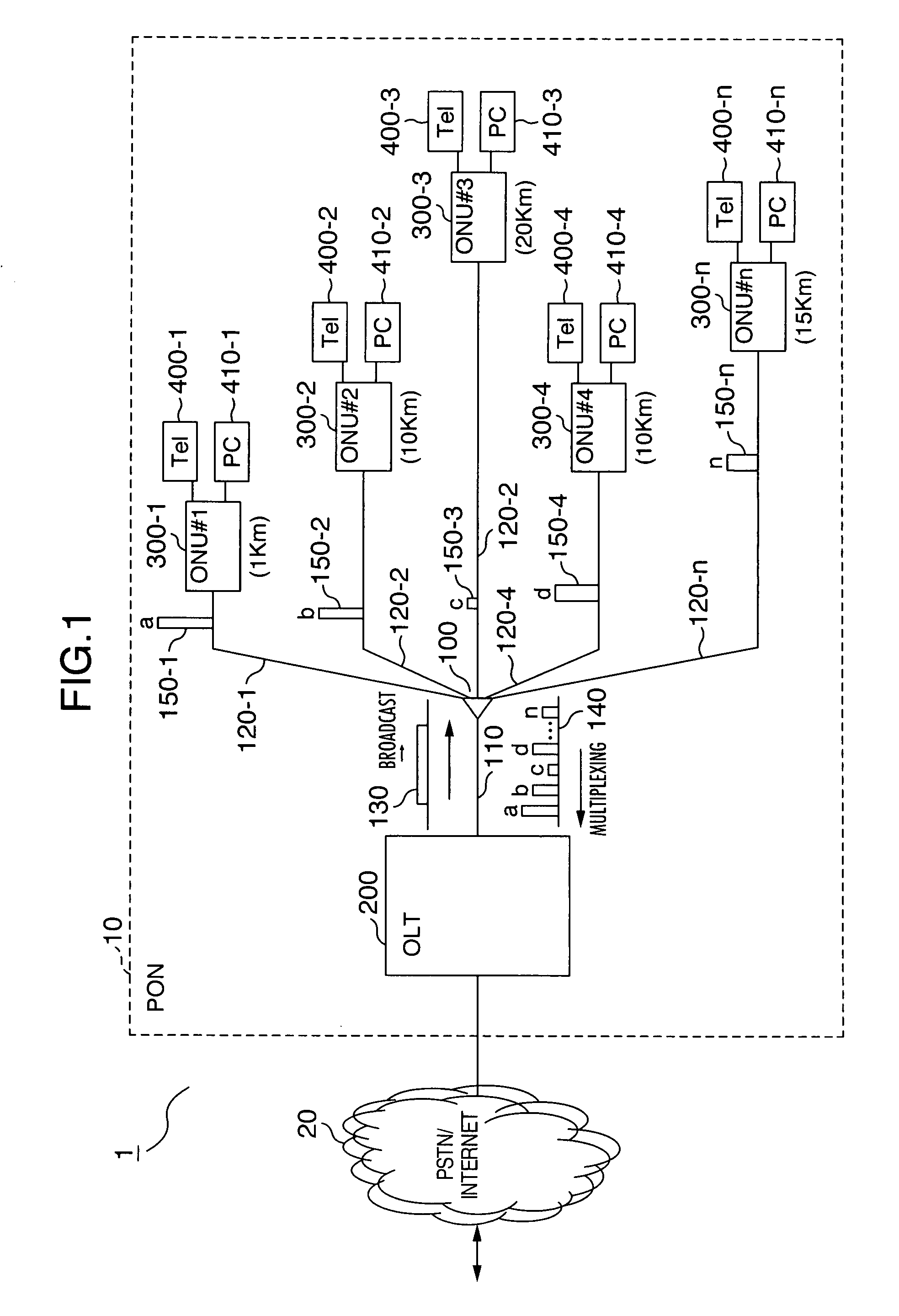Passive optical network system and operating method thereof
optical network technology, applied in the field of configuration and operation of a passive optical network system, can solve the problems of reducing the net bandwidth that can be used for the transmission of signals from each onu, affecting the efficiency of the operation of the receiver circuit, etc., to achieve excellent bandwidth utilization efficiency, shorten the activation time of the pon, and increase the loss of optical fiber
- Summary
- Abstract
- Description
- Claims
- Application Information
AI Technical Summary
Benefits of technology
Problems solved by technology
Method used
Image
Examples
Embodiment Construction
[0028]Below, a detailed description will be given, using the drawings, of a PON configuration and operation according to the present invention, citing as an example the operation of the configuration of a GPON defined in ITU-T Recommendation G984.
[0029]FIG. 1 is a network block diagram showing a configuration example of an optical access network using a PON. FIG. 2 and FIG. 3 are frame block diagrams respectively showing the configuration of an optical signal from an OLT to an ONU and an optical signal from an ONU to an OLT. Also, FIG. 4 is a sequence diagram showing an example of an operating sequence of a PON and FIG. 5 is an explanatory diagram showing a working example of a PON.
[0030]As shown in FIG. 1, an access network 1 is a network carrying out communication by connecting a public Switched Telephone network (PSTN) / Internet 20 (below sometimes called “host network”) and subscriber terminals (such as Tel 400 and PC 410) through a PON 10. PON 10 comprises an OLT 200 (below some...
PUM
 Login to View More
Login to View More Abstract
Description
Claims
Application Information
 Login to View More
Login to View More - R&D
- Intellectual Property
- Life Sciences
- Materials
- Tech Scout
- Unparalleled Data Quality
- Higher Quality Content
- 60% Fewer Hallucinations
Browse by: Latest US Patents, China's latest patents, Technical Efficacy Thesaurus, Application Domain, Technology Topic, Popular Technical Reports.
© 2025 PatSnap. All rights reserved.Legal|Privacy policy|Modern Slavery Act Transparency Statement|Sitemap|About US| Contact US: help@patsnap.com



